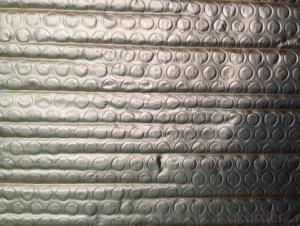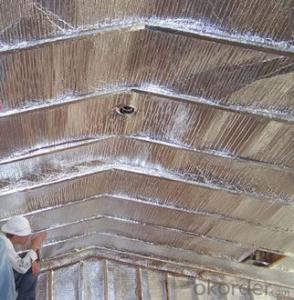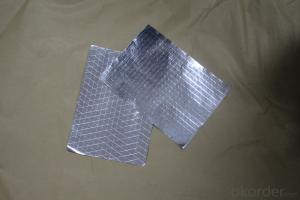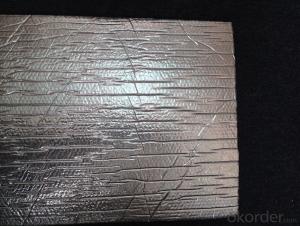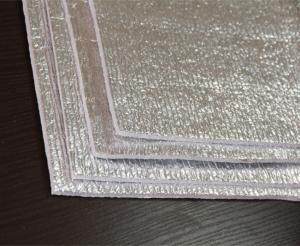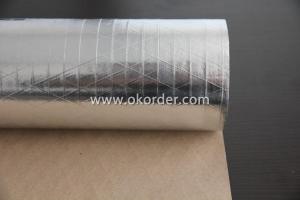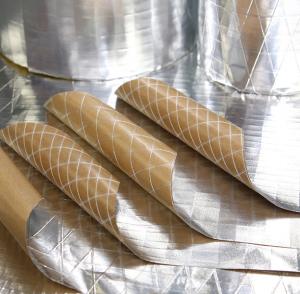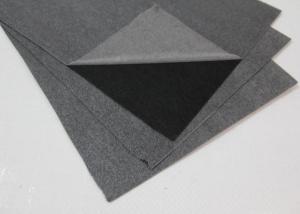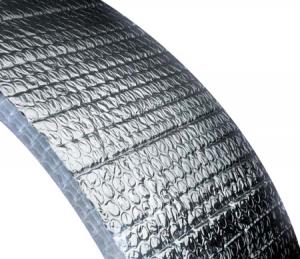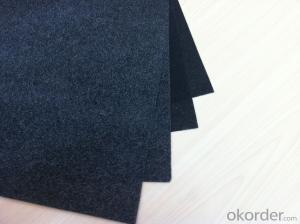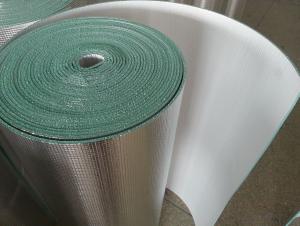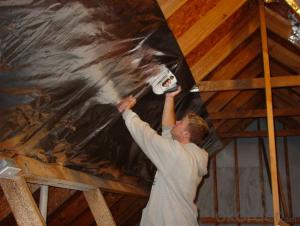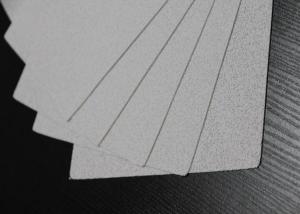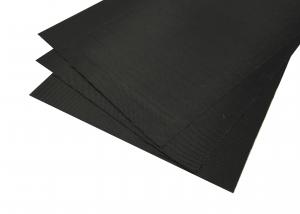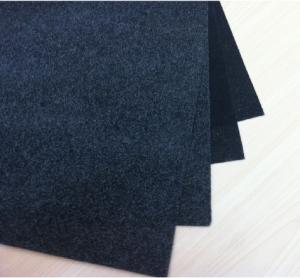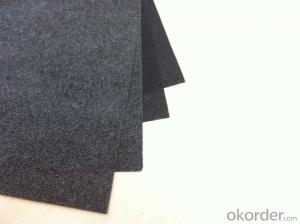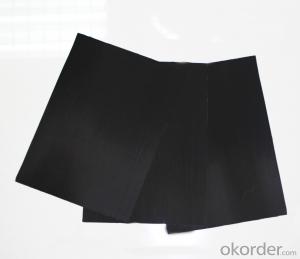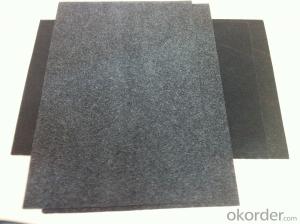flexible ducts bubble ALUMINUM
- Loading Port:
- China Main Port
- Payment Terms:
- TT OR LC
- Min Order Qty:
- -
- Supply Capability:
- -
OKorder Service Pledge
OKorder Financial Service
You Might Also Like
Application:
1,Building Thermal Insulation Material
(1),Roof,Underlay,Under Concrete & floor Insulation;
(2),Attic,Crawl Space,Stud Wall ,Metal Frame Building Insulation.
2,Wrapping
(1),Protective coatings of ventilating pipe,HVAC Duct & Pipe;
(2),Shells of air conditioner and water heater.
Feature:
1), Waterproof, heavy duty, clean, light, flexible, non-absorbent surface
2), Fire resistant & antiglare
3), Recyclable, environmentally friendly
4), Effective in extreme temperatures both hot and cold
5), Easily install, cut, stapled, nailed or glued into place
6), Safe to handle with no special clothing or breathing Equipment
Feature:
1), Waterproof, heavy duty, clean, light, flexible, non-absorbent surface
2), Fire resistant & antiglare
3), Recyclable, environmentally friendly
4), Effective in extreme temperatures both hot and cold
5), Easily install, cut, stapled, nailed or glued into place
6), Safe to handle with no special clothing or breathing Equipment

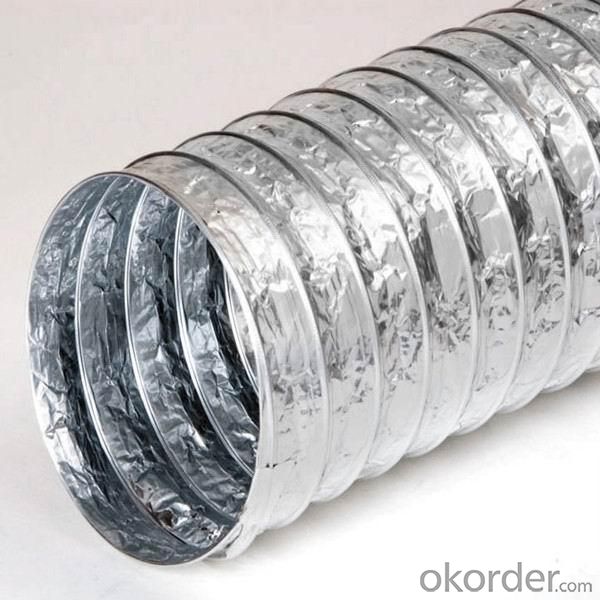


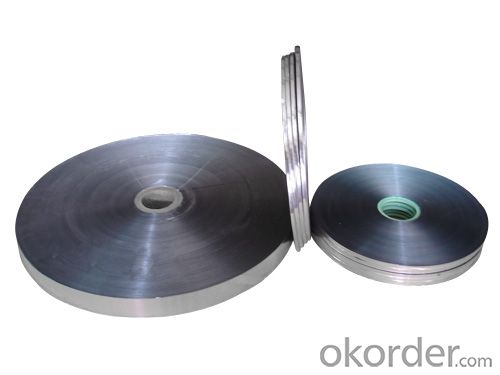


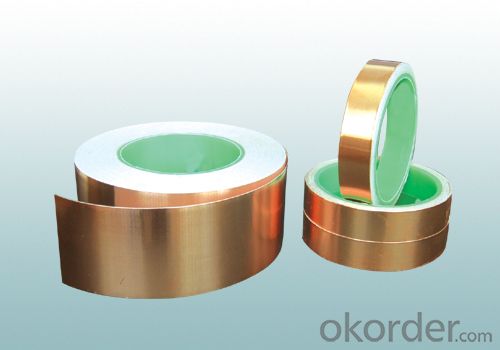
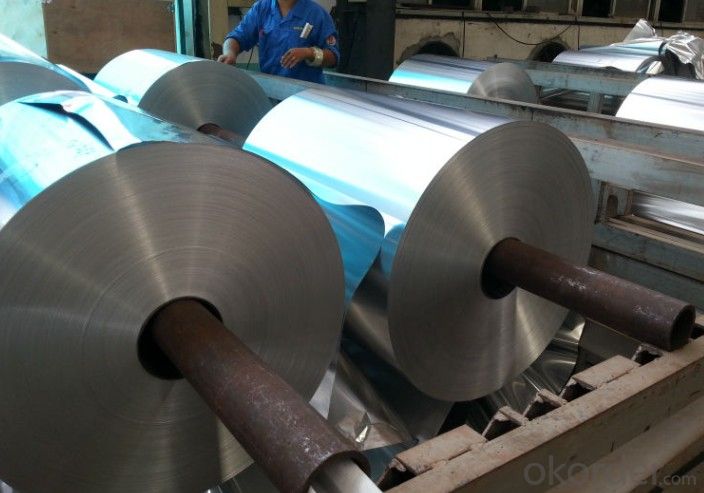

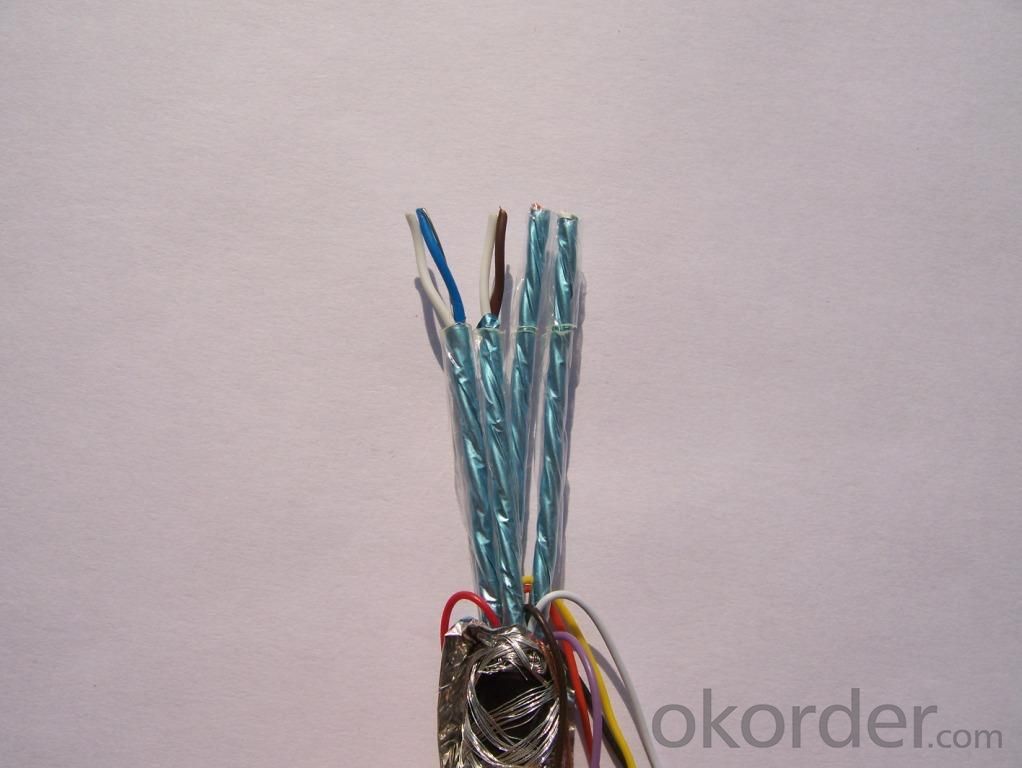
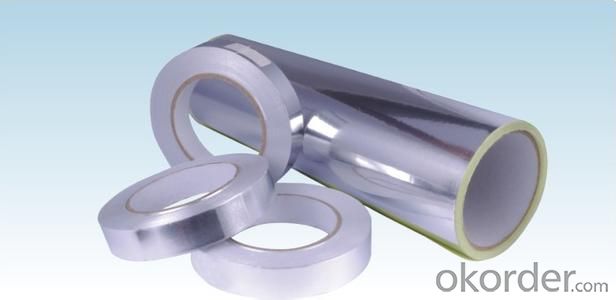
- Q:Is fiberglass facing fire-resistant?
- Yes, fiberglass is fire-resistant. It is made of glass fibers that do not burn and are therefore able to withstand high temperatures without igniting.
- Q:What is the typical thickness of fiberglass facing?
- The specific application and requirements dictate the typical thickness of fiberglass facing, which can vary. Generally, fiberglass facing comes in thicknesses ranging from 0.5 millimeters to 2 millimeters. For lightweight and flexible applications like insulation and acoustic panels, thinner fiberglass facing (approximately 0.5 to 1 millimeter) is commonly utilized. On the other hand, heavier-duty applications in construction and industrial settings often require thicker fiberglass facing (around 1.5 to 2 millimeters) for enhanced strength and durability. To ensure optimal performance and functionality, it is crucial to consider the project's specific needs and specifications when determining the appropriate thickness of fiberglass facing.
- Q:Can fiberglass facing be used in both residential and commercial buildings?
- Yes, fiberglass facing can be used in both residential and commercial buildings. It is a versatile material that offers insulation, soundproofing, and moisture resistance, making it suitable for various applications in both types of buildings.
- Q:Does fiberglass facing help with soundproofing?
- Yes, fiberglass facing can help with soundproofing. Fiberglass has excellent sound absorption properties, and when used as a facing material, it can enhance the soundproofing capabilities of walls, ceilings, or other surfaces. The facing acts as a barrier, reducing the transmission of sound waves through the material, thereby reducing noise transfer between spaces.
- Q:Can fiberglass facing be used in high-temperature applications?
- No, fiberglass facing cannot be used in high-temperature applications. Fiberglass is a type of reinforced plastic material that is known for its excellent thermal insulation properties and resistance to corrosion. However, it has a low melting point and is not suitable for use in high-temperature environments. When exposed to high temperatures, fiberglass can melt, warp, or degrade, compromising its structural integrity and insulation properties. Therefore, it is important to choose alternative materials specifically designed for high-temperature applications, such as ceramic fiber or metal facing, to ensure safety and optimal performance.
- Q:Can fiberglass facing be painted or customized?
- Certainly! Fiberglass facing has the capability to be painted or personalized. Fiberglass, known for its versatility, can be easily painted with a variety of paint types, including acrylic or oil-based options. Prior to painting, it is crucial to adequately prepare the surface by thoroughly cleaning it and eliminating any dirt or debris. Additionally, it is advisable to utilize a primer to enhance adhesion and guarantee a polished outcome. Once the primer has dried, you can proceed to apply the desired paint color or personalize the fiberglass facing through the use of stencils, decals, or other decorative techniques. Nevertheless, if the fiberglass facing is going to be exposed to harsh weather conditions, it is vital to utilize paint and materials suitable for outdoor use. By undertaking the appropriate preparations and utilizing the right paint, fiberglass facing can be painted or personalized to satisfy your specific aesthetic preferences or design requirements.
- Q:How does fiberglass facing improve insulation?
- Fiberglass facing improves insulation by providing an additional layer of protection to the insulation material. The facing acts as a barrier, preventing air and moisture from entering or escaping the insulation. This helps to maintain the desired temperature inside the insulated space, as well as preventing the growth of mold or mildew. Additionally, the facing enhances the durability and strength of the insulation, making it more resistant to damage and ensuring its longevity. It also enhances the fire resistance of the insulation, providing an added layer of safety. Overall, the fiberglass facing improves insulation by enhancing its thermal performance, moisture resistance, durability, and safety.
- Q:Does fiberglass facing require regular maintenance?
- No, fiberglass facing does not require regular maintenance. Fiberglass is a durable material that is resistant to many environmental factors, such as moisture, UV rays, and pests. It does not rust, rot, or decay like other materials, which means it does not need to be painted or sealed regularly. However, it is important to keep the fiberglass facing clean and free from dirt or debris to maintain its appearance and performance. Regular cleaning with a mild detergent and water should be sufficient to keep it in good condition. Additionally, if any damage or cracks occur in the fiberglass facing, it should be repaired promptly to prevent further issues. Overall, fiberglass facing is a low-maintenance option that can last for many years with minimal care.
- Q:Is not the multi-layer membrane waterproof, the bottom of the membrane should use glass fiber mats?
- No, just fiberglass felt tread cloth soft
- Q:How does fiberglass facing compare to other types of insulation materials?
- Fiberglass facing is a popular choice for insulation materials due to its numerous advantages over other types of insulation. Firstly, fiberglass facing offers excellent thermal insulation properties, helping to maintain a comfortable temperature inside buildings by minimizing heat transfer. It has a high R-value, which means it provides effective resistance to heat flow. Additionally, fiberglass facing is highly durable and long-lasting. It does not degrade or lose its insulating properties over time, ensuring that it remains effective for many years. This durability also makes it resistant to moisture, mold, and pests, which can be a common issue with other insulation materials such as cellulose or foam. Furthermore, fiberglass facing is easy to install, reducing both time and labor costs. It is available in various forms like batts, rolls, or loose-fill, making it adaptable for different applications and spaces. Its lightweight nature makes it easy to handle and maneuver during installation. One of the key advantages of fiberglass facing is its fire resistance. It is non-combustible, meaning it does not contribute to the spread of fire and can help contain it. This property makes it a safer choice compared to other insulation materials like foam, which can be flammable. Lastly, fiberglass facing is an environmentally friendly option. It is made from natural materials such as sand and recycled glass, reducing its impact on the environment. Additionally, fiberglass insulation can help conserve energy and reduce carbon emissions by improving the energy efficiency of buildings. Overall, fiberglass facing stands out as an excellent choice for insulation materials due to its thermal insulation properties, durability, ease of installation, fire resistance, and eco-friendliness. It outperforms many other types of insulation materials, making it a preferred option for various construction and insulation projects.
1. Manufacturer Overview |
|
|---|---|
| Location | |
| Year Established | |
| Annual Output Value | |
| Main Markets | |
| Company Certifications | |
2. Manufacturer Certificates |
|
|---|---|
| a) Certification Name | |
| Range | |
| Reference | |
| Validity Period | |
3. Manufacturer Capability |
|
|---|---|
| a)Trade Capacity | |
| Nearest Port | |
| Export Percentage | |
| No.of Employees in Trade Department | |
| Language Spoken: | |
| b)Factory Information | |
| Factory Size: | |
| No. of Production Lines | |
| Contract Manufacturing | |
| Product Price Range | |
Send your message to us
flexible ducts bubble ALUMINUM
- Loading Port:
- China Main Port
- Payment Terms:
- TT OR LC
- Min Order Qty:
- -
- Supply Capability:
- -
OKorder Service Pledge
OKorder Financial Service
Similar products
New products
Hot products
Related keywords
